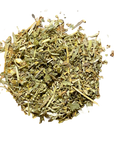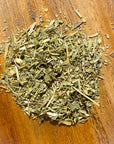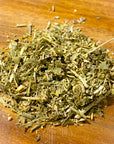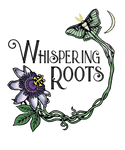


Wormwood
Botanical name: Artemisia absinthium
^Organic
Wormwood, scientifically known as Artemisia absinthium, is a perennial herb belonging to the Asteraceae family. This plant is native to Europe, Asia, and North America, often found in dry, rocky soils and disturbed areas. Wormwood is characterized by its silvery-green, feathery leaves and small, yellow-green flowers that bloom in dense clusters.
In herbal medicine, wormwood has been traditionally valued for its potential digestive and anti-parasitic properties. The leaves can be used to make tinctures, teas, or extracts, offering a distinctly bitter flavor that has made it a key ingredient in traditional beverages like absinthe. Historically, wormwood has been utilized in various cultures for its reputed benefits in stimulating appetite and alleviating digestive discomfort.*
*These statements have not been evaluated by the Food and Drug Administration. This product is not intended to diagnose, treat, cure, or prevent any disease. For educational purposes only.



